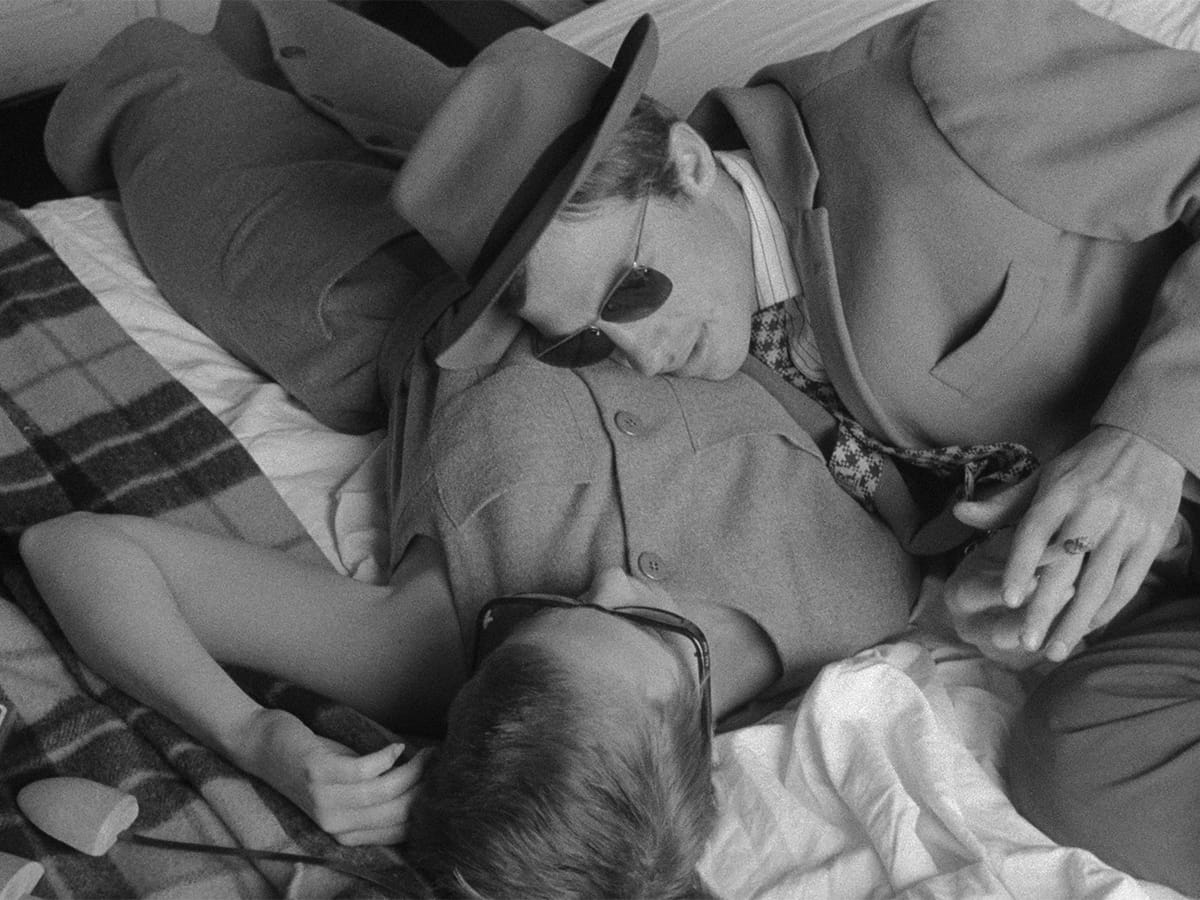Breathless

Many great movies are classics. A few stand as landmarks. The merest handful—perhaps four or five in a century—deserve to be called revolutions. Breathless belongs unequivocally in the final category. Since its first screening in 1960, Jean-Luc Godard’s astonishing debut has lost none of its power to thrill an audience or change the way we see the world.
Godard dedicated the film to Monogram Pictures, the company which made the low-rent gangster cheapies that Breathless was drawing on and greatly sending up. Jean-Paul Belmondo plays Michel, a small-time crook who kills a highway patrolman. Though on the lam to Italy, he heads to Paris and hooks up with his girlfriend Patricia, a boyish American whose allure is her cool capriciousness. As they talk, make love and lackadaisically dodge the cops, Godard shows them to be the kind of young people that the movies had never before shown—alive in the present tense, oblivious to conventional morality, eager to try on world views like so many hats. Theirs is an instinctive existentialism, and Godard’s leading actors make it almost impossibly glamorous.
Wiry and sensual, the 26-year-old Belmondo became an international star by capturing Michel’s winning mixture of vulnerability and outlaw bravado; his passion for Patricia evokes post-war France’s volatile love for the exuberance of American culture. But though Godard feels the same passion, he’s not sentimental about it. As played by Iowa-born Jean Seberg, Patricia is a star-spangled sphinx whose unforgettable blend of goddess and bitch could be a European’s metaphor for the New World’s promise and perfidy. Godard’s friend and colleague Francois Truffaut wrote the original story and seldom gets enough credit for its sneaky-smart simplicity. Yet what makes Breathless revolutionary comes not from weighty intellectual themes but from Godard’s knockabout spontaneity, a blithe spirit of improvisation that gleefully scuttles what’s worn out in old movies. Just as Godard knew that crooks-on-the-run pictures could no longer be played straight, he knew that the ruling ideas of professional craftsmanship (handsome photography, invisible editing) had become a prison—a way of not seeing the world. He wanted to reinvent cinema in order to liberate it. “Breathless,” he said, “was the sort of film where anything goes: that was what it was all about.”
The movie’s most shocking technique, initially, is its lavish use of jump cuts, a deliberately jarring style of editing that Godard uses to evoke urban life’s racing, herky-jerky rhythms. In love with the modern city as it’s actually lived in, he sends Raoul Coutard’s incomparable camera through dinky apartments and teeming streets, submerging us in the unruly swirl of a contemporary world where everything eventually collides: Michel and Patricia’s melodrama breaks into a parade for De Gaulle and Eisenhower on the Champs Elysees, and movie posters toss out an ironic commentary on the romance-hungry souls of those passing them by. No other director has ever matched Godard’s feel for the elusive textures of the modern, especially his sharp awareness that many of our primary experiences now come through the media. While this is clearly the case with Patricia—who interviews film directors, quotes from Faulkner and even sells the New York Herald Tribune—it’s more fatally true of Michel, whose code of honor comes straight from B-movies. There may be no more illuminating moment in any ‘60s movie than Michel standing before a photo of Humphrey Bogart and self-consciously running his thumb across his lips just like Bogey. Soon after Breathless first appeared, not only were millions mimicking Belmondo’s own mannerisms but filmmakers began to imitate Godard. His footprints show up in everything from A Hard Day’s Night and Bonnie and Clyde to today’s sassy, bounding, nervously edited commercials for athletic shoes and blue jeans.
In the seven years following Breathless, Godard created a run of movies—including My Life to Live, Contempt, Band of Outsiders, Alphaville, Masculin féminin, Two or Three Things I Know About Her, and Weekend—that may be the greatest period of sustained brilliance in motion picture history. But his genius was already obvious in this lilting yet heartbreaking masterpiece which captures the lyricism and cruelty of city life, the easy amoralism of youthful impatience, the melancholy dead-end of male-female relations, the doomed romanticism of those weaned on old movies. The most iconoclastic of revolutionary films, Breathless is also the freshest. More than thirty years after its release, it still throbs with the ineffable longing that draws us, dreaming, to the movies. To see it is to become different.




